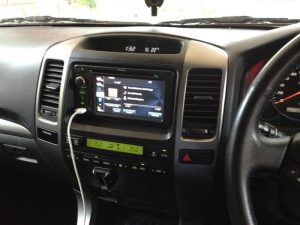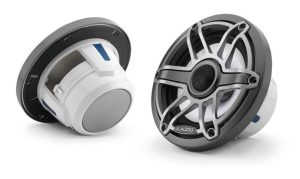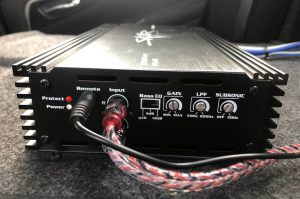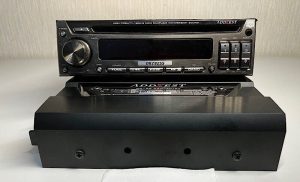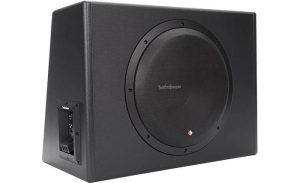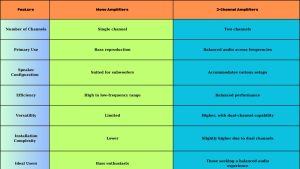Choosing the right fuse size for a 3000-watt car amplifier ensures your audio system runs safely and efficiently. A fuse protects your amp, wiring, and vehicle from electrical overloads, preventing damage or fire hazards. But how do you determine the correct fuse size for a 3000-watt amp? This guide breaks down the process step by step, offering clear answers and practical tips to help you make an informed decision. Let’s dive into the details of fuse sizing, electrical calculations, and best practices for your car audio setup.
Contents
Why Fuse Size Matters for Your 3000-Watt Amp
A fuse acts as a safety barrier in your car’s audio system. It prevents excessive current from flowing through the amplifier, which could overheat wires or damage components. Without the right fuse, you risk short circuits, blown equipment, or even dangerous electrical fires. For a high-powered 3000-watt amp, selecting the proper fuse size is critical because these amplifiers draw significant current, especially during peak performance.
Fuses come in various ratings, measured in amps (A), and choosing one that matches your amplifier’s power requirements ensures optimal protection. Too small a fuse will blow frequently, interrupting your music. Too large a fuse might fail to protect your system, allowing dangerous current levels. Let’s explore how to calculate the ideal fuse size for your 3000-watt amplifier.
Understanding Power, Voltage, and Current
To pick the right fuse, you need to understand the relationship between power (watts), voltage, and current (amps). A 3000-watt amplifier consumes a lot of power, but the actual current it draws depends on the voltage of your car’s electrical system. Most vehicles operate at 12 volts, though some systems may run closer to 14.4 volts when the alternator is charging.
The formula to calculate current is:
Current (I) = Power (P) ÷ Voltage (V)
For a 3000-watt amp running at 12 volts:
I = 3000 ÷ 12 = 250 amps
At 14.4 volts, the current draw decreases slightly:
I = 3000 ÷ 14.4 ≈ 208 amps
These calculations assume 100% efficiency, but amplifiers are not perfectly efficient. Most car amps operate at 50-80% efficiency, meaning they draw more current than the ideal calculation suggests. For a conservative estimate, factor in efficiency. If your amp is 70% efficient, adjust the formula:
Adjusted Current = (Power ÷ Voltage) ÷ Efficiency
For a 3000-watt amp at 12 volts with 70% efficiency:
I = (3000 ÷ 12) ÷ 0.7 = 250 ÷ 0.7 ≈ 357 amps
This shows your amp could draw up to 357 amps under real-world conditions. However, this is the total current draw, and your fuse size will depend on how the amp is wired and whether it’s a mono or multi-channel amplifier.
Choosing the Right Fuse Size
Now that you know your 3000-watt amp may draw around 208-357 amps, you need a fuse that can handle this current without blowing unnecessarily. Car audio experts recommend selecting a fuse slightly higher than the calculated current draw to account for surges during bass-heavy music or sudden power demands. A good rule of thumb is to add 10-20% to the calculated current.
For a 3000-watt amp drawing 250 amps at 12 volts, a fuse between 275-300 amps is typically safe. If you factored in 70% efficiency (357 amps), a fuse rated at 400 amps might be appropriate. However, always check your amplifier’s manual or specifications. Manufacturers often provide recommended fuse ratings based on their design and testing.
Another key point: the fuse protects the power wire running from the battery to the amplifier, not the amp itself. Place the fuse as close to the battery as possible—within 12-18 inches—to minimize the risk of unprotected wiring causing a fire. Use a high-quality fuse holder or distribution block rated for the current you’re dealing with.
Types of Fuses for Car Audio Systems
Several fuse types work for car audio setups, each with specific advantages. Here’s a quick rundown of the most common options:
- ANL Fuses: Popular for high-power systems, ANL fuses handle large currents (up to 300 amps or more) and are durable. They’re ideal for 3000-watt amps.
- AGU Fuses: Common in lower-power setups, AGU fuses typically max out at 80-100 amps, making them unsuitable for a 3000-watt amp.
- MAXI Fuses: Compact and affordable, MAXI fuses support up to 80-100 amps, so they’re not ideal for high-powered amplifiers.
- Circuit Breakers: An alternative to fuses, circuit breakers trip when overloaded and can be reset. They’re reusable but may cost more upfront.
For a 3000-watt amp, ANL fuses or circuit breakers are the best choices due to their high current ratings. Ensure the fuse or breaker matches the wire gauge you’re using, as undersized wires can overheat even with the correct fuse.
Wire Gauge and Fuse Compatibility
The power wire connecting your battery to the amplifier must handle the current without overheating. Wire gauge, measured in AWG (American Wire Gauge), determines how much current a wire can safely carry. For a 3000-watt amp drawing 200-400 amps, you’ll need a thick wire, typically 0 AWG or 1/0 AWG. Smaller gauges like 4 AWG or 8 AWG won’t suffice and could create a fire hazard.
Here’s a basic guide for wire gauge and current:
- 0 AWG: Supports up to 300-400 amps (ideal for 3000-watt amps)
- 2 AWG: Supports up to 150-200 amps (too small for most 3000-watt setups)
- 4 AWG: Supports up to 100-150 amps (not suitable)
Match the fuse to the wire’s current-carrying capacity, not just the amp’s draw. If you use 0 AWG wire rated for 400 amps, a 400-amp fuse ensures the wire is protected. Always use oxygen-free copper (OFC) wire for better conductivity and safety.
Common Mistakes to Avoid
When sizing a fuse for a 3000-watt amp, beginners often make errors that compromise safety or performance. Here are some pitfalls to steer clear of:
- Using Too Small a Fuse: A fuse rated too low (e.g., 100 amps) will blow constantly, cutting power to your amp during loud tracks.
- Using Too Large a Fuse: A 500-amp fuse might seem safe, but it could allow dangerous current to flow through undersized wires, causing overheating.
- Skipping the Fuse Altogether: Never run an amp without a fuse. Unprotected wiring is a fire waiting to happen.
- Ignoring Efficiency: Failing to account for your amp’s efficiency can lead to underestimating current draw, resulting in an undersized fuse.
- Poor Fuse Placement: Installing the fuse too far from the battery leaves long stretches of unprotected wire vulnerable to shorts.
Double-check your calculations, consult your amp’s manual, and use quality components to avoid these issues.
Additional Tips for a Safe Audio Setup
Beyond choosing the right fuse, a few extra steps ensure your 3000-watt amp performs reliably:
- Upgrade Your Alternator: A 3000-watt amp taxes your vehicle’s electrical system. A high-output alternator (200+ amps) prevents voltage drops and dimming headlights.
- Use a Capacitor or Second Battery: These stabilize voltage during peak power demands, reducing strain on your system.
- Ground Properly: A solid ground connection reduces electrical noise and improves amp performance. Use the same gauge for ground and power wires.
- Test Your System: After installation, monitor voltage and current with a multimeter to confirm everything operates within safe limits.
When to Consult a Professional
If math and electrical work feel overwhelming, don’t hesitate to seek help. Installing a 3000-watt amp involves high currents that can be dangerous if mishandled. A professional car audio installer can size the fuse, select the right wire, and ensure your setup meets safety standards. This is especially important for complex systems with multiple amps or custom vehicles.
Wrapping Up
Selecting the correct fuse size for a 3000-watt amplifier boils down to understanding your amp’s current draw, factoring in efficiency, and matching the fuse to your wire gauge. A 3000-watt amp typically requires a 275-400 amp fuse, depending on voltage and efficiency, with ANL fuses or circuit breakers being the best options. Use 0 AWG wire, place the fuse close to the battery, and avoid common mistakes like undersizing the fuse or skipping it entirely.
By following these guidelines, you’ll protect your car audio system, enjoy powerful sound, and keep safety first. If you’re unsure about any step, consult your amp’s manual or a professional installer. With the right fuse and setup, your 3000-watt amp will deliver booming bass and crystal-clear highs without a hitch.

